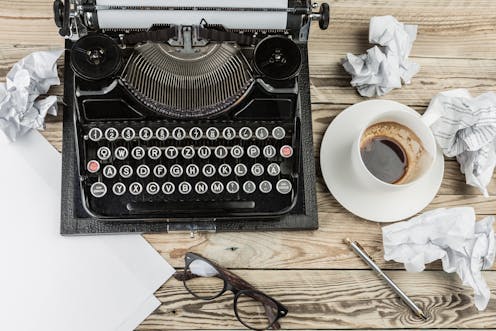
Imagine you’re the literary editor for a major US newspaper, like The New York Times or The Washington Post. You know that getting a good notice in your paper can launch the career of a young writer and you’re far from indifferent to the fate of literary culture. You majored in English and once nurtured dreams of being a novelist yourself. But tens of thousands of fiction titles are published each year and it sometimes feels like most of them are piled up on your desk.
Review: Inside the Critics’ Circle: Book Reviewing in Uncertain Times – Phillipa K. Chong (Princeton University Press)
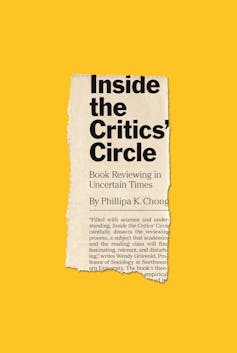
So, what are you to do? How do you decide what gets covered and what ignored? Spoiler alert: it’s not meritocratic.
You are to some degree condemned to judge books by their covers. You quickly get quite good at it. Anything by a Big Name author, a new title by Margaret Atwood or Jonathan Franzen, is a publishing event and of course needs to be reviewed by one of your go-to writers. That piece will go the front of the section with a large author photo.
As to the others? Some genres don’t stand a chance. Romance fiction? No way. Sci-fi, fantasy, thrillers? No, no, no. In general, that which seems like “literary fiction” will attract your eye and it’s not hard to pick those out from the pile, based on the blurb or the publisher. Occasionally, you might do a round up of recent crime writing.
But remember, you’re working for a newspaper, so it helps if the book treats a story that is topical or in some way relatable to current events. Every so often you can cover a suite of books under an eye-catching theme, and make it into a longer piece about fiction’s response to Climate Change or the #MeToo movement, a phenomenon that a recent n+1 editorial about the dismal state of criticism has derisively dubbed CRT – the “Contemporary Themed Review”.
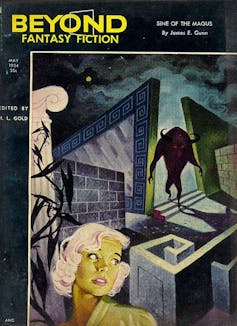
These pieces might risk coercive homogeneity, ironing out differences in tone, theme, structure or style, in order to intervene in the Zeitgeist, but with any luck these will get a bit of reaction on Twitter, which is the name of the game.
“Books of the year” and “best of” lists are other ways you can get into the slipstream of social media. It is fandom, not analysis, that gets most attention, spiced up with the occasional eye-catching takedown or hatchet job.
We are a long way from critics as the arbiters of taste, the gatekeepers of culture who might introduce readers to vital and new literary forms and thereby provide an antidote to the algorithmic conformity and banality that hangs over contemporary book culture.
Contingency and precarity
Phillipa K. Chong’s Inside the Critics’ Circle gives us a snapshot of contemporary reviewing from the perspective of a sociologist. Unlike a lot of “state of culture” interventions, the book is not a polemic or a jeremiad, but a dispassionate inquiry into the world of editors and reviewers in the USA based on some forty interviews.
Inside the Critics’ Circle is about critics as journalistic reviewers, a category she distinguishes from literary essayists and literary academics, both a little further along the chain in the process of “consecration” through which an author is deemed significant enough to enter the literary canon. What emerges is a tale of contingency, precarity and uncertainty, from the moment books get selected for review all the way to the future prospects of newspaper critics and criticism.
While the book is US (indeed New York) focussed, there are surely lessons here for Australia. The same precarity afflicts reviewing culture here, with the dwindling of on-staff critics in most newspapers and the need to compete for online attention.
There are still prominent book reviewers who are not themselves novelists (Geordie Williamson, chief reviewer for The Australian comes to mind). But the circuits of book festivals and dinner parties are small, with an even greater potential for coteries and back-scratching.
But in some ways the everyday little accidents of fate are the most chilling. How many major new novels, for example, get overlooked because the editor cannot think of a suitable reviewer on one particular day? Chong’s interest here is exclusively on fiction reviewing and one of the distinctive and consequential features she highlights is that, in the US at any rate, there is currently a tendency to ask novelists to review novels.
And why wouldn’t they, you might ask (and so might they). Novelists understand the form, having practised it themselves and are, therefore, qualified to evaluate their fellows. True, we don’t expect films to be reviewed by directors or restaurants to be reviewed by chefs, but then novelists and critics both seem to be using the same material – the written word. And now, since most newspapers have far fewer if any on-staff critics than they used to, and most reviewing is done on a freelance basis, many fiction writers are only too happy to have a bit of extra income, especially when the gig might also increase their visibility.
Yet there are some drawbacks to this arrangement. I don’t want to open the Romantic can of worms between the “creative” and the “critical” sensibility, but let’s just say that one does not guarantee the other. Sure, there are examples of great novelist-critics. But there are also (looking at you, Susan Sontag) those whose criticism overwhelmingly outclasses their attempts at fiction.
I’m reminded of that scalding quip by the Cambridge critic Eric Griffiths on A.S. Byatt’s Possession (1990): “the kind of novel I’d write if I didn’t know I couldn’t write novels”.
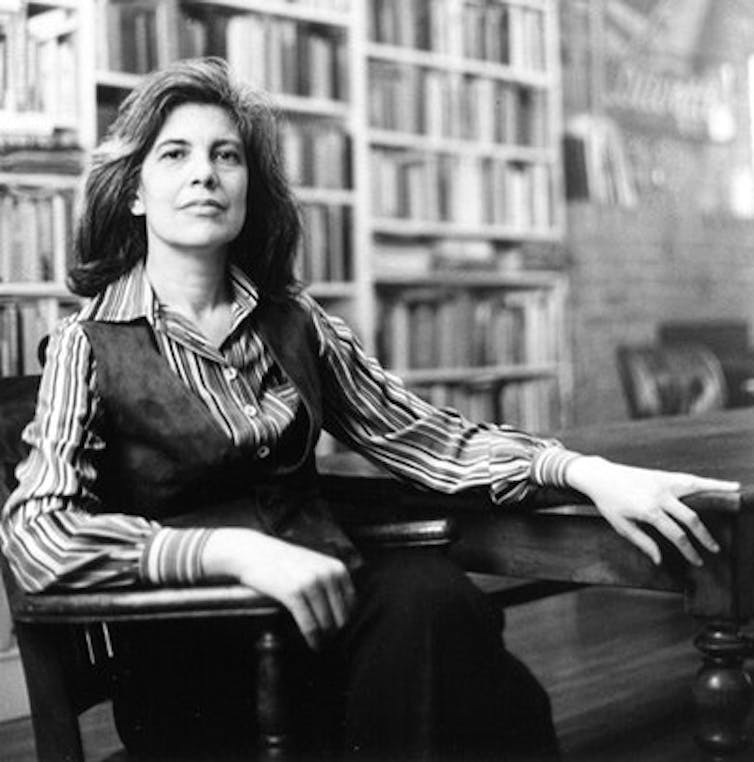
Leer más: The critical friend: for whom does the art critic speak?
The dwindling prestige of the critic
The palming off of reviewing as a side-gig is a sign of the dwindling status and prestige of the role of the critic and there are some regrettable unintended consequences. Indeed, some of the stories that Chong tells suggest that President Biden should sign an executive order forbidding the practice.
You see, novelists, when reviewing someone else’s efforts, often have more skin in the game than a professional critic and arguably can muster less distance. They know how hard it is to write a novel, and how devastating and embarrassing a snarky review can feel.
More selfishly, why would a novelist give a bad review to someone that might be reviewing their novel the following week? What if that writer is a judge on a prize committee? What if others judge the negative review to be motivated by malice or envy?
There are unpredictable and even long-term consequences. Chong records one instance when a reviewer was confronted, years later, at a party by the wife of someone who had been on the receiving end of a bad review: “You know, you’ve ruined his life!”
So instead of writing bad reviews, reviewers tend to “play nice” or couch what they feel. What if they really loathe the book? They can talk around it, giving a plot summary or reflecting on the wider literary field of which the book forms a part, maybe throwing in some tempered evaluation in the final paragraph.
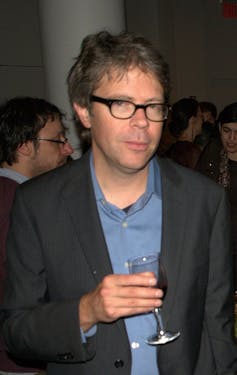
However, all these considerations disappear when reviewing the book by a really famous author. You should never go hard on a first-timer, but big game is fair game. There is an unspoken rule that you can punch up, but not down. The celebrities can take a bit of rough handling. It won’t have the same effect on their sales and they go to different parties to you anyway. Bad reviews and contrarian takes can get people talking, which is why the hatchet jobs end up getting anthologised.
That readerly pleasure is far less guilty if aimed at a tall poppy. If you’ve decided to let loose in your review on the latest Franzen, there is a bit of incentive to go in hard and not to be mealy mouthed. It’s a good way of getting noticed. Franzen doesn’t rely on reviews for his success, the way a fledgling novelist might, and look at the amount of space that gets devoted to him in the books section, space that might be nurturing up-and-coming talent.
Risky business
Still, you never really know who will read your review. Once it flies into the world, it’s outside your control and always to some extent a “risky business”, as one of the chapter titles here puts it.
Uncertainty of various sorts is the structuring theoretical frame of Chong’s book, which is divided into three parts, each about one sort of uncertainty.
“Epistemic uncertainty” refers to the absence of clear criteria on which one can base aesthetic judgements. Reviewers evaluate characterization, plot and language, but ultimately any assessment will have a subjective element that could potentially be at odds with that of other critics.
“Social uncertainty” refers to the unpredictable way readers (and editors) will respond to a review and how critics write to accommodate this unknown.
“Institutional uncertainty” refers to the overall purpose of newspaper reviewing, how it fits into the cultural ecosystem, and how critics think about the future of criticism.
The arc of the book follows the review process, beginning with editors deciding what books should be reviewed and by whom, then considering how reviewers go about the process of evaluation, then concluding with their reflection on the value and impact of reviewing as whole.
Yes, many broadsheets have cut back on review sections and others have replaced it with the sort of feature articles or profile pieces which puff up celebrity at the expense of critical discernment. Yes, the on-staff book critic has been outsourced to pay-per-gig freelancers. Nonetheless, paid reviewers (albeit paid per review) are still with us, despite predictions since the rise of the new media that they would go the way of the rag-and-bone man and the bus conductor.
One reason for that is because old-fashioned print media has found a way to move into and work with the internet, rather than compete with it as a medium. If this shift has entailed some vulgar chasing after clickbait, it has also enabled online review sections and longer form writing.
Online only publications like the Los Angeles Review of Books and the Sydney Review of Books have enriched reviewing culture immensely, while older publications like the London Review of Books, the New York Review of Books and Australian Book Review, have adapted to digital culture, and reached new audiences, without losing their quality or altering their core identity.
Of course, the wider blogosphere means that all niche and minority interests can find assessments and conversations online. Interested in reviews of those derided genre novelists? You can glut yourself on your smartphone. Have a hankering for experimental avant-garde poetry? Ditto.
The conversation about quality literature is more diffuse than a generation or two ago, which is one reason that the social standing of a major newspaper reviewer has declined. Yet the reviewers interviewed in Chong’s book still justify their work with appeals to a wider good, as well as to an investment in their own professional standing.

Leer más: Every critic counts: why Fairfax must keep its arts journalists
Code switching
So what is the good of book reviewing? How do we – or more pointedly how do the paid reviewers themselves – justify the existence of newspaper critics in an age of Yelp, TripAdvisor and Goodreads? A world in which, in other words, it often feels everyone is reviewing everything all the time?
The critics interviewed here, maybe understandably in the current precarious circumstances, are a little bit too ready with their elbows when it comes to asserting their own worth and purpose. They insist that they fill a vital niche between the amateurs on the one hand, the mere enthusiasts that populate the blogosphere, and the academics who are too arcane, specialised and out of touch.
“I do sometimes think that bloggers are kind of dumb, as a general rule,” confesses one charmer.
Allegedly, the amateurs on the internet treat books as mere entertainment and the serious business of self-improvement needs the paid reviewers in the newspapers. But they themselves must not get too high falutin’, lest they become as abstruse and naval-gazing as the academics. Yes, there is porousness between the three categories and it is not uncommon for academics, for instance, to review for newspapers.
But they “code-switch” when they do so successfully, adjusting the register for a wider audience. One reviewer quoted by Chong, himself an academic, criticised another reviewing academic for being “too pretentious in his intellectual outlook” and for “being so far above his own readers that in the end, rather than doing a service he does a disservice to the book that he is reviewing”.
As for literary theory, predictably and very unoriginally it evokes the greatest populist swagger from the literary journalists. “Outside invading small countries, the worst thing that men do is to invent literary theories,” proclaims one respondent, possibly a recovering academic, who has a PhD in English.
Leer más: Book reviewing is an art, in its own way
Diversity and obsessive self-reflexivity
Perhaps surprisingly, apart from a glancing mention of the gender politics in the conclusion, there is a very little in Chong’s book about diversity, race, and sexual identity, issues which have been prominent in recent public discussion of the arts and its organs of dissemination.
If this is so for the USA, where many cultural institutions made public commitments to racial inclusiveness following the events of the summer of 2020, it is also true in Australia, where there are frequent calls for decolonisation and racial justice and organisations like Stella campaign for gender equity in the literary world.
One would expect that the subject position of a reviewer and the increasing expectation for diversity of the books reviewed must be a consideration in editorial decisions and in the self-positioning of reviewers. If so, we don’t get much discussion of it here.
That also means that any incipient tension between the demands of aesthetic and political realms remain unexplored. Does the need to represent a multiplicity of voices and experiences in the media, especially those voices which have been marginalised and silenced, make it harder or easier to argue for the function of criticism at the present time? Does the current self-examination by institutions of culture, including universities, museums and newspapers, about their own historical implication in oppressive or discriminatory power relations make the role of the reviewer-as-expert, as privileged purveyor of judgement, harder to sustain?
Chong’s respondents are all anonymous, presumably in the interests of scholarly objectivity, but it would be interesting to hear their views about these most livid areas of our current cultural conversations.
Reading this book was, for me, something of a cross-disciplinary encounter. In my own subject, literary studies, self-reflexivity borders on the obsessive. Literary academics, like a lot of scholars in the humanities, are forever examining the whys and wherefores of what they do. What’s the value of “doing English”? How do we justify our discipline in an age when the social and cultural capital of the humanities is frequently challenged by the econometric thinking of politicians and policy makers?
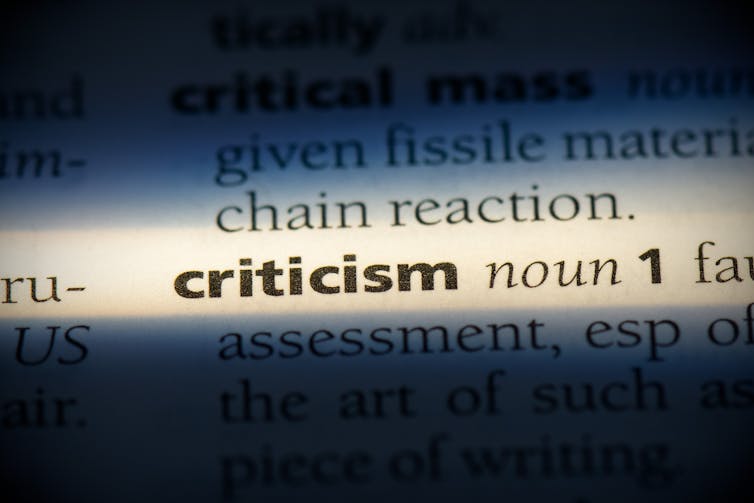
It’s salutary to look at how a sociologist handles the “value of criticism” question, which is, bluntly, with a lot more lucidity and less theoretical agonising. Chong goes to the practising reviewers and asks them to describe what they do and why they do it, then subjects their answers to qualitative analysis. The questions she raises – what status do we give to someone’s taste? Is there an extra-subjective element to aesthetic judgement? – are pretty venerable ones.
Chong doesn’t go to Kant or Hume to come up with answers, but rather goes to the reviewers themselves. There are benefits to that approach, but also costs: questions go a-begging and many presumptions remain unchallenged.
More than a philosophical angle, I would have welcomed some more genealogy and intellectual history. How did the reviewing ecosystem evolve into its current state? What was it like thirty years ago? How has reviewing culture shifted in recent decades and what are the cultural, social, and institutional explanations for these changes?
In saying that, I may be violating a fundamental rule of fair-minded reviewing – you review the book the author has written, not an imaginary alternative. Chong has given us a valuable, clear-headed inquiry into contemporary journalistic book reviewing. Her research brings calm illumination to these troubled waters. Her own non-judgmental approach gives us a crystal exposition of how and why judgements are made by those, editors and reviewers, seeking to navigate these uncertain straits.
Ronan McDonald receives funding from the Australian Research Council.
This article was originally published on The Conversation. Read the original article.







